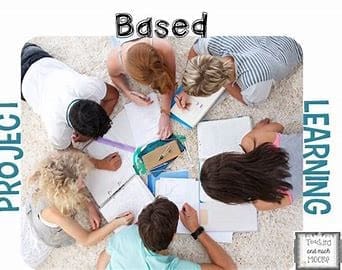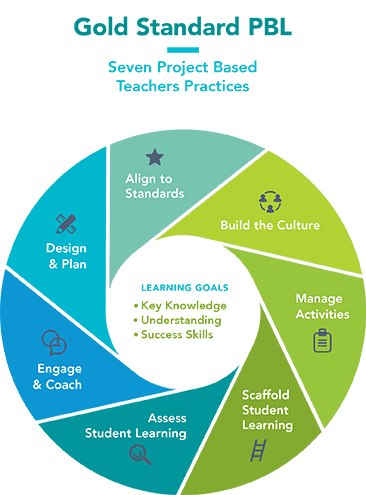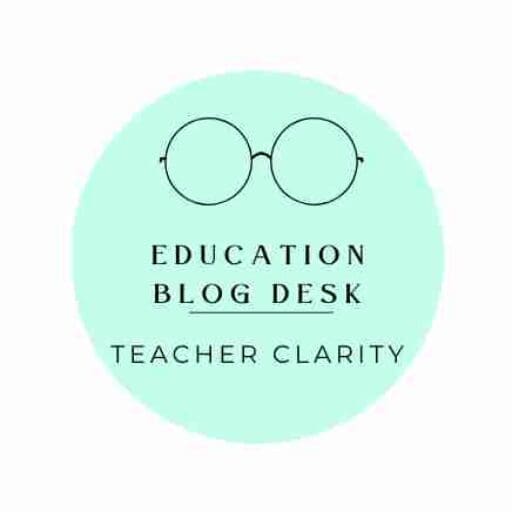Project Based Learning: Explained Video
Innovative Power of Project-Based Learning

Project-Based Learning is a game-changer in education, inviting students to dive into hands-on projects that put them in the driver’s seat of their own learning journey. By working together on meaningful tasks, students enhance their critical thinking and problem solving abilities while crafting innovative solutions to real-world problems. This engaging approach nurtures creativity and collaboration while allowing students to witness the tangible results of their efforts, sparking a lifelong love for learning that goes far beyond the classroom.
Adopting a gradual approach to project-based learning can significantly enhance student engagement with their projects. By breaking down complex tasks into smaller, more manageable pieces, students find it easier to tackle challenges and build their confidence throughout the process. This incremental strategy encourages exploration and thoughtful reflection, giving learners the opportunity to refine their ideas and enhance their skills with ongoing feedback. Additionally, as they complete each stage of the project, they experience a sense of achievement that boosts motivation, making the entire learning journey more enjoyable and fulfilling!
According to the article Project-Based Learning (PBL) Benefits, Examples & 10 Ideas for Classroom Implementation, the goal is to get students to engage with a question or challenge that requires concentration and nuanced problem-solving skills.
This question or challenge must:
- Be open-ended
- Encourage students to apply skills and knowledge they’ve developed in your classes
- Allow students to take their own approaches to develop an answer and deliver a product
It’s often cross-disciplinary and based on critical thinking. It encourages students to take a rewarding, yet difficult path to skill-building and knowledge acquisition through a nuanced learning process.
Tapas Approach to Project-Based Learning
In their book, “Tapas Approach to Project-Based Learning, Tara Koehler and John Sammon simplify intricate instructional techniques into digestible components, unlocking the full potential of PBL. They introduce a four-part framework know as PBL Tapas:
- Foundational Concepts
- Key Elements of Effective PBL
- Implementation and Enhancement
- Assessment, Evaluation, and Reflection
This structured approach paves the way for successful project-based learning experiences, empowering students to thrive.

Doing Projects vs Project-Based Learning
Before going into the 4 Part Framework let’s highlight the relationship between “doing projects” and Project-Based Learning: The distinction between traditional projects and project-based learning (PBL) rests in the methods and goals behind the activities. While conventional projects are typically viewed as the final products of education, PBL serves as the “main dish” in the student’s learning experience.

In PBL, the project acts as a vehicle for teaching essential academic concepts and skillsets, prompting students to tackle significant questions. This deep engagement allows them to dive into the subject matter and apply their knowledge in meaningful ways. This emphasis is on a student-centered approach, focusing on processes and contextual understanding, while highlighting teamwork, critical thinking, and practical application in the real world.
Culinary Journey of PBL
Koehler and Sammon draw parallels between teachers and a tapas chef of education, carefully curating a diverse learning experiences for their students. In particular, how educators can both take small bites and create small bites for their students as they navigate the complex journey of creating and executing effective Project-Based Learning that improves student achievements.
Koehler and Sammon advocate a ‘small bite methodology’. This method highlights the advantages of dividing intricate educational ideas into smaller, more manageable pieces, similar to savoring a selection of tapas during a meal. Physically, this strategy lessens the intimidating aspect of large tasks, making learning feel more approachable for both students and teachers. Emotionally, it cultivates a feeling of success and encouragement, since every ‘small bite’ completed enhances confidence and involvement. Mentally, this technique supports improved understanding and memory retention, allowing students to concentrate on grasping each part throughly before progressing to the next.

Foundational Concepts
Setting the ambiance in the PBL classroom explores the following essential ingredients:
- Student Perspectives
- Classroom atmosphere
- Openness and respect
- Growth mindset
- Empowerment
- Diversity
- Inclusion
- 4C’s (critical thinking, communication, collaboration, and creativity)
Kohler and Sammon explore elements of our foundational concepts, which are a crucial part of our four part framework. Koehler and Sammon focus on establishing a classroom culture that not only supports project-based learning but is beneficial for any educational environment discussed in their post Taking an Incremental Approach to Project Based Learning.
Flavorful Dishes
‘Small Bite’ Approach to PBL offering strategies to breakdown standards, develop clear learning objectives, implement varied instructional methods, and focus on essential elements of PBL design. Kohler and Sammon article Breaking Down the Complex Work of Teaching PBL into Manageable Chunks
Kohler and Sammon provide insights that can help you create engaging, impactful learning experiences aligned with real-world applications. Here are the list of insights provided by Kohler and Sammon article:
BREAKING DOWN STANDARDS FOR TARGETED, IMPACTFUL LEARNING
Implementing PBL in the classroom is most effective when done in small, manageable steps, guided by educational standards. By breaking down key standards into more digestible components for easier student comprehension, teachers can align their instruction with benchmarks and intended learning objectives.
From these deconstructed standards, educators can develop clear, student-friendly learning objectives that represent specific skills or knowledge points. Introducing these objectives progressively helps students build on prior knowledge, creating a cohesive and connected learning journey.
DIVERSE INSTRUCTIONAL METHODS: THE MULTIFACETED APPROACH
PBL is often misunderstood as being solely inquiry-based, but a variety of instructional methods are essential to address diverse learning needs and enhance outcomes.
The 5E model of instruction
It utilizes the Engage, Explore, Explain, Elaborate, Evaluate model to structure PBL phases. Start with engaging activities to spark interest, followed by exploration through research and inquiry. Use the explanation phase for learning from experts (including the teacher) and data analysis, then move to elaboration, where students apply their knowledge creatively. Finally, employ the evaluation stage for reflection and assessment.
Small group activities
Small group activities are a cornerstone of PBL, promoting collaboration, communication, and critical thinking. By working in small groups, students engage in collaborative problem-solving, where they can share ideas, debate perspectives, and build on each other’s strengths.
This method fosters a deeper understanding of content, as students are encouraged to articulate their thoughts and learn from their peers. Additionally, small groups accommodate differentiated instruction.
Explicit direct instruction
While PBL is often associated with student-driven inquiry, explicit direct instruction plays a vital role in providing the foundational knowledge and skills that students need to engage effectively in their projects. This method involves clear, structured teaching where concepts are explained directly and thoroughly.
By integrating explicit direct instruction into PBL, educators can ensure that students grasp essential content before applying it in more complex, open-ended tasks. For a detailed example of how explicit direct instruction can be seamlessly integrated into PBL, our article “Blending the Best: Merging Project-Based Learning with Explicit Direct Instruction” provides practical insights and strategies for balancing student-driven inquiry with the structured teaching necessary to ensure that all students have the tools they need to succeed.
Workshops
Within a PBL framework, workshops offer interactive, hands-on learning experiences that allow students to explore specific skills or concepts in depth. Workshops can be designed to address particular needs that arise during the project, such as a workshop on subject-related content, effective presentation skills, or a session focused on research methods.
These sessions give students the opportunity to practice and refine their skills in a supportive environment before applying them to their projects. Workshops also allow for the integration of expert input, where professionals from relevant fields come in to share their knowledge, further enriching the learning experience.
CRAFTING SUCCESS: THE ESSENTIALS OF THOUGHTFUL PBL PLANNING
Successful PBL demands careful planning and intentional design. By using our EcoHeroes project as a case study and Tapas Templates for free resources, you’ll be equipped with everything you need to create engaging and meaningful PBL projects.
Evaluating student strengths and weaknesses
Assessing student strengths and weaknesses is essential for tailoring PBL projects to diverse learning needs. By gathering data through assessments, observations, and self-reflections, educators can identify areas for growth and differentiate instruction accordingly.
This personalized approach allows for targeted interventions and opportunities that leverage students’ strengths while addressing their challenges, ensuring active participation and success for all. For example, a student strong in analysis but weaker in collaboration might lead research while receiving support in teamwork skills.
Real-world applications
Incorporating real-world relevance into PBL projects makes abstract concepts tangible, enhancing student motivation and engagement by linking classroom content to real-life situations. This approach may involve addressing community issues, simulating challenges, or collaborating with local businesses.
For example, in the EcoHeroes project, students tackle environmental conservation by applying science, ELA, and math skills in hands-on investigations, proposal writing, data analysis, and community collaboration to assess impact.
Storylines and driving questions
Compelling storylines and driving questions are crucial for an engaging and purposeful PBL project. Storylines provide context, making the learning journey relatable and interesting, while turning simple projects into exciting adventures. For example, the EcoHeroes project uses an environmental conservation storyline to empower students as community changemakers. Driving questions, which are open-ended and thought-provoking, guide the inquiry process and encourage critical thinking.
In EcoHeroes, the driving question is, “How can we effectively plan, design, and implement projects in order to positively impact our environment and community?” An easy formula for creating driving questions is, “How can/might we [action verb/s] [specific problem or challenge] in order to [desired outcome or goal]?”
Turning points
In PBL projects, turning points break the work into manageable segments, providing structure and clarity. They guide students through the project, helping them stay focused and on track. At each turning point, students develop parts of the project, turning the process into a learning journey. These moments also allow for reflection, assessment, and adjustment, ensuring that progress is evaluated and necessary changes are made.
For example, in the EcoHeroes project, turning points help students understand environmental issues, focus on challenges, plan solutions, execute proposals, assess impact, engage the community, and reflect on their work. Celebrating these turning points fosters a growth mindset and recognizes achievements.
Effectively integrating project-based learning into the classroom demands a strategic approach that tackles the complexities of design and planning. By deconstructing instructional methods into manageable parts, concentrating on key standards, employing diverse teaching strategies, and focusing on essential elements in both design and planning, educators can craft engaging and impactful learning experiences.
With careful planning and a strong commitment to real-world relevance, educators can easily overcome the challenges of PBL, empowering students to reach their full potential.
Embarking on the PBL Journey: Essential Steps to Success
PBL is not just a teaching method, it’s a vibrant journey into authentic learning. Implementing PBL might seem daunting at first, but with the right steps, it unfolds into an enriching experience for both students and educators. Let’s break it down into manageable milestones.
To successfully implement the project, the Gold Standard PBL has seven Project Based Teaching Practices to help teachers overcome one of the biggest hurdles: the need to give up some control over the classroom and trust in their students. Even though teachers are more often the “guide on the side”, this certainly does not mean teachers don’t “teach” in a PBL classroom, but are reframed in the context of a project.

Design & Plan
Initial planning and project design
Every successful project starts with a plan. As an educator, your first step is to outline the goals, outcomes, and scope of the project. Think about the core question or challenge that will drive your students’ inquiry, and consider how the project aligns with curriculum standards. Remember, a thoughtful design is the blueprint of effective PBL.
Align to Standards
Teachers use standards to plan the project and ensure it addresses key knowledge and understanding from subject areas to be included.
Incorporation of student input and choice
A hallmark of PBL is its emphasis on student agency. Give your learners a voice by incorporating their interests and choices into the project. This not only boosts engagement but also ensures that the learning experience is personalized and relevant to each student.
Below is a Complete Guide to Project-Based Learning where I merged 5 Blog posts and revamped them into a Complete Guide to Project-Based Learning booklet. It is free to download if you wish to read it.
Building the Culture
Teachers explicitly and implicitly promote student independence and growth, open-ended inquiry, team spirit, and attention to quality.
Manage Activities
Execution and management of the project timeline
Now, it’s time to shift from planning to action. As your students embark on their projects, focus on facilitating and supporting rather than directing. Help them manage timelines, resources, and collaborate effectively. Your role is to be a guide on the side, assisting them as they navigate through the challenges and triumphs of their project.
- Plan checkpoints and milestones to keep the project on track.
- Encourage peer reviews and feedback for continuous improvement.
- Provide tools and strategies for time and task management.
Scaffold Student Learning
Teachers employ various lessons, tools, and instructional strategies to support all students in reaching project goals.
Assess Student Learning
Teachers use formative and summative assessments of knowledge, understanding, and success skills, and include self and peer assessment of team and individual work.
Engage & Coach
Teachers engage students in their learning and work alongside them to identify when they need skill-building, redirection, encouragement, and celebration.
Conclusion
By following these steps in implementing PBL, you’re setting the stage for a learning adventure that equips students with critical skills and deeper connection to their learning experiences. So, take a deep breath and dive into the world of PBL with confidence and excitement!
